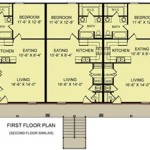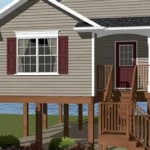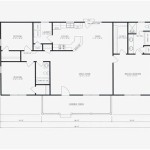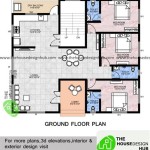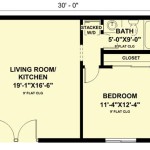Energy Efficient Homes Floor Plans
As the world becomes increasingly aware of the impact of climate change, it is essential to design and construct homes that minimize their environmental footprint. One of the most important aspects of an energy-efficient home is its floor plan.
The floor plan of a home determines how energy is distributed throughout the space. A well-designed floor plan can help to reduce heat loss, improve air circulation, and maximize natural light. This can result in significant savings on heating and cooling costs, as well as a more comfortable and healthy living environment.
Key Factors to Consider When Designing an Energy-Efficient Floor Plan
- Orientation: The orientation of a home on its lot can have a significant impact on its energy efficiency. Homes that are oriented to the south in the Northern Hemisphere (or the north in the Southern Hemisphere) receive the most sunlight, which can help to reduce heating costs in the winter.
- Shape: The shape of a home can also affect its energy efficiency. Compact, square or rectangular homes have less exterior surface area than homes with complex shapes, which reduces heat loss.
- Windows and Doors: Windows and doors are major sources of heat loss in a home. Energy-efficient windows and doors have double or triple glazing, which can help to reduce heat loss by up to 50%.
- Air Sealing: Air sealing is the process of sealing gaps and cracks in a home's envelope (the exterior walls, roof, and foundation). Air sealing can help to reduce heat loss and improve air quality.
- Insulation: Insulation is a material that resists the flow of heat. Adding insulation to a home's walls, ceiling, and floor can help to reduce heat loss in the winter and heat gain in the summer.
Benefits of an Energy-Efficient Floor Plan
There are many benefits to designing an energy-efficient home floor plan, including:
- Reduced energy costs: Energy-efficient homes use less energy to heat and cool, which can save homeowners significant money on their utility bills.
- Increased comfort: Energy-efficient homes are more comfortable to live in, as they maintain a more consistent temperature throughout the year.
- Improved air quality: Energy-efficient homes are better sealed and insulated, which helps to improve air quality by reducing the amount of dust, pollen, and other allergens that enter the home.
- Reduced environmental impact: Energy-efficient homes produce less greenhouse gases, which helps to protect the environment.
Conclusion
Designing an energy-efficient floor plan is an important step in creating a sustainable and comfortable home. By considering the factors discussed above, homeowners can design homes that minimize their environmental impact and save money on energy costs.

Cool Energy Efficient Concrete House Plans Houseplans Blog Com

Sustainable Building In 2024 Energy Efficient Kit Homes

Cool Energy Efficient Concrete House Plans Houseplans Blog Com

Energy Efficient Home Design Plans Cad Pro

Home Designs Fsec

Energy Efficient House Plan 55060br Architectural Designs Plans

How To Build An Energy Efficient Home

Floor Plan Friday An Energy Efficient Home House Plans L Shaped

Energy Efficient Tudor Home Plan 55087br Architectural Designs House Plans

Cool Energy Efficient Concrete House Plans Houseplans Blog Com

